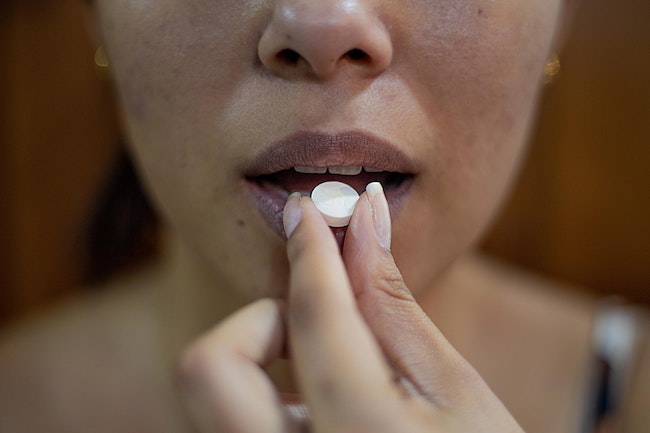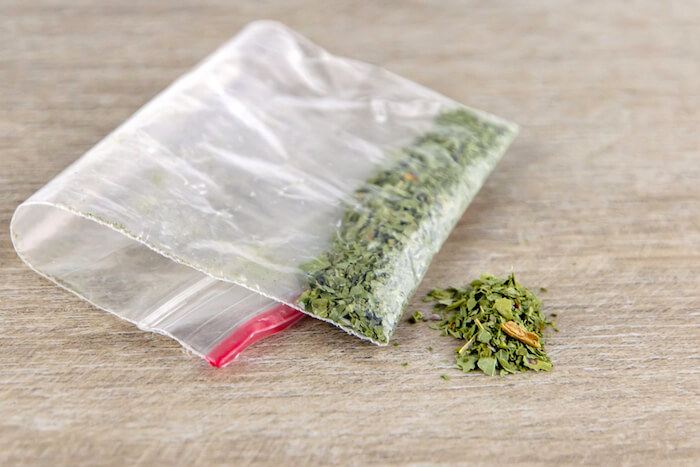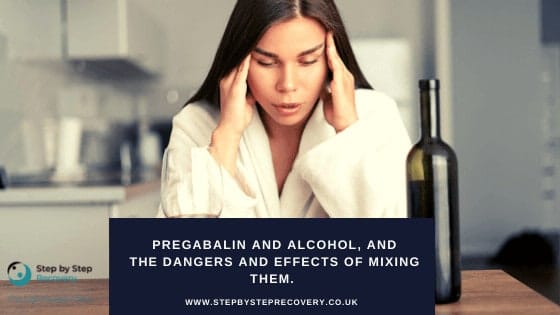Updated January 2023
Tramadol is an opioid used to treat pain and is commonly prescribed because it is considerably less addictive than most other opioid medications. But that definitely does not mean it is not addictive and tramadol side effects can be life-threatening when it is abused.
Tramadol is generally prescribed following an accident or surgery or during a flare-up of a chronic condition, such as arthritis or fibromyalgia. It is only meant for short-term use, but even if it is taken as prescribed, it is still possible to become addicted to this drug and suffer from unpleasant tramadol withdrawal symptoms.
Tramadol received attention in the media when Ant McPartlin spoke about his addiction to prescription drugs, including tramadol and his abuse of alcohol, after his “botched” knee surgery. He has since received addiction treatment in residential rehab and returned to our screens. But while the media are currently focused on OxyContin and fentanyl addiction, tramadol continues to be a widely abused prescription medication.
The Black Market: Tramadol Online
Many controlled prescription drugs can easily be purchased online or from dealers and anti-drug campaigns report that the tramadol black market is booming.
Purchasing prescription medication — whether online or from a dealer — is always risky as you can never be sure what is in it. Producing prescription drugs to sell online is a huge business, and many labs are in China and India, where there are no controls or checks.
Tramadol bought online could contain fentanyl, which can be deadly in tiny amounts. This opioid is often added to tablets that are supposed to be tramadol or other prescription medications such as OxyContin or Xanax to make them even more addictive. Even if you can obtain “pure” tramadol, the actual mg of the tablets will not be accurate, meaning the side effects may be more severe and it is much harder for medics to estimate how much you have actually taken.

Tramadol Side Effects and Abuse
Obtaining tramadol online or taking it more often or in higher doses than prescribed are both forms of abuse. Another way tramadol is abused is by mixing it with other prescription or illicit drugs or alcohol to increase its side effects.
People of all ages abuse tramadol. Among the tramadol deaths reported in the UK, the youngest was a 16-year-old girl and the oldest was a pensioner in his 70s. A person who abuses tramadol may not necessarily be addicted to the drug, but abuse is highly likely to eventually lead to addiction.
Knowing how to recognise abuse and tramadol side effects could prevent addiction from developing and may save your or someone else’s life. Common symptoms of abuse and tramadol side effects include:
- Pinpoint (very small) pupils
- Excessive sweating
- Shaking of any part of the body.
- Nausea or vomiting
- Drowsiness
- Slurred speech
- Headaches
- Poor coordination
- Constipation
- Fever
- Dizziness
- Appetite loss
- Muscle aches.
The Dangers of Tramadol
Tramadol becomes extremely dangerous and can cause death when it is mixed with alcohol or prescription, or illicit drugs. Even when the drug is used properly and under the supervision of a doctor, tramadol can cause side effects, such as nausea and dizziness. Severe tramadol side effects or overdose are generally due to abuse and include:
- Seizures
- Central nervous system (CNS) depression, which slows the heart rate and breathing
- Loss of consciousness
- Coma
- Death.
Another potentially life-threatening side effect is serotonin syndrome, which can cause symptoms including:
- Confusion
- Agitation
- Jerky or rigid muscles
- Tremors
- Lack of coordination.
This is why you should seek medical attention for yourself or anyone displaying any side effects of tramadol, even if it has been taken as prescribed.
Recognising the Signs of Tramadol Addiction
Developing a tolerance to tramadol and needing to take higher doses to experience the drug’s effects is normally the first indication that you are developing an addiction to tramadol. Suffering from tramadol withdrawal symptoms is also a sign of physical dependence.
However, addiction is not always defined by physical dependence. If you do not have withdrawal symptoms but have a compulsive desire to take tramadol that you cannot control, you have a psychological addiction to the drug.
Behavioural signs of tramadol addiction include:
- Lying to doctors to obtain extra prescriptions
- Neglecting daily responsibilities
- Having regular “sick” days off work or college
- Withdrawal from friends and family
- Losing interest in activities you used to enjoy
- Money problems.
Recognising the Signs of Tramadol Withdrawal
When you are physically dependent, you will experience tramadol withdrawal symptoms if you try to quickly reduce your dose or simply try quitting “cold turkey.” Generally, withdrawal symptoms will last for around five to seven days. The length of time you experience withdrawal symptoms will depend on the doses you take and the length of time you have been abusing tramadol.
Once physical dependence has developed, tramadol withdrawal symptoms will typically occur within 36 hours after your last dose and include:
- Mood swings and anxiety
- Insomnia
- Hyperactivity
- Constant running nose
- Watery eyes
- Nausea and vomiting
- Diarrhoea
- Excessive sweating
- Impaired coordination.
Treatment for Tramadol Addiction
Trying to detox from tramadol without medical support can be extremely unpleasant and the withdrawal symptoms may be life-threatening. This is why you have the highest chance of success if you have a medically assisted detox, during which you will be prescribed medication to help alleviate severe tramadol withdrawal symptoms and cravings.
But a detox is not generally enough to ensure you remain addiction free and relapse is more likely if you do not receive any type of addiction treatment after you are clean. Therapy can either be accessed as an outpatient or in a residential rehab centre. Overall, research shows that people who receive addiction treatment in a residential rehab have the lowest rates of relapse.
Step by Step Recovery provides a comprehensive medically assisted detox for tramadol addiction, a bespoke rehabilitation programme at our residential drug rehab in Essex and outpatient addiction therapy at our London clinic. We have years of experience treating prescription drug addiction and understand that it can happen to anyone.
When stopping tramadol, it is vital that you seek professional help. Tramadol withdrawal is unpleasant and can result in dangerous symptoms, including seizures. If you are not in a position to afford tramadol rehab, we suggest you speak with your GP or an NHS addiction treatment service. Accessing the correct professional support for tramadol dependence or addiction can be the difference between life and death.
Freedom from tramadol is possible even if you have a chronic pain condition. Please call us for free advice about prescription drug addiction treatment on 0800 170 1222, or complete our contact form today and let us help you to live free from addiction.
Page revised in March 2023, by Danielle Byatt, a Level 4 addictions counselling, Level 5 in Leadership & Management, BA applied social work. and Treatment Director at Step by Step Recovery.




